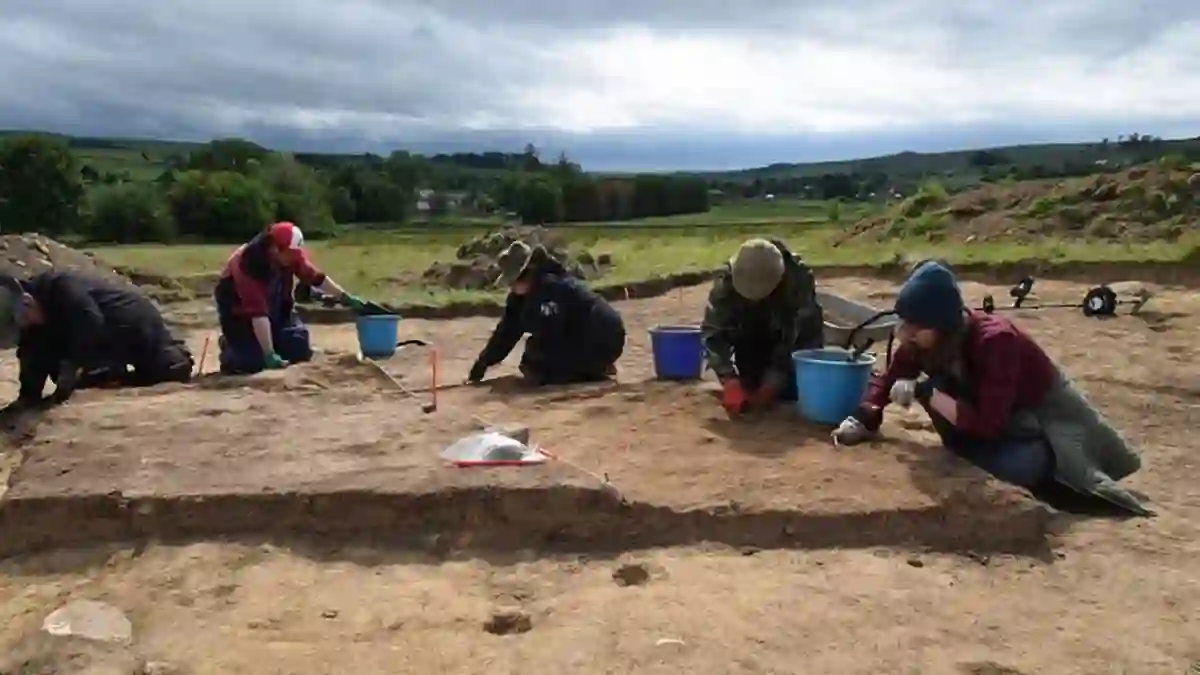An archaeology student from Florida made a remarkable discovery during her very first dig in England.
Yara Souza, from Orlando, stumbled upon a medieval gold medal while participating in a Newcastle University excavation in Redesdale, Northumberland, last July.
According to the university, Souza found the decorative object within just 90 minutes of beginning the group dig.
“I couldn’t believe I’d found something so quickly into my first ever excavation. It was actually quite overwhelming,” she said.
A Glimpse Into the Past
The gold piece dates back to the 800s and measures approximately one and a half inches in length, featuring a decorative ornament on one end.
Experts believe the medal may have had a religious or ceremonial purpose, as gold was a symbol of high status and reserved for the elite.
The discovery site is located near Dere Street, a major Roman road that historically connected York and Edinburgh.
The route remained in use long after the Roman Empire fell, eventually becoming part of today’s A68, which stretches from Edinburgh to northeast England.
Experts Excited by the Exceptional Find
James Gerrard, Professor of Roman Archaeology at Newcastle University and Souza’s tutor, praised the discovery.
“This is an exciting find of exceptional quality, and I’m delighted for Yara that she has made this discovery at the beginning of her career as an archaeologist,” he said.
Professor Gerrard noted that Dere Street continued to serve as a major thoroughfare long after the Romans, suggesting that the medal may have belonged to high-status individuals traveling along this route.
“It is possible that this pair of objects may have been deliberately buried,” he added.
A Personal Milestone for Souza
Souza, who studies archaeology at Newcastle University, had missed last year’s excavation at Birdoswald Roman fort due to illness.
She described the gold discovery as a thrilling moment, saying, “After I had to miss Birdoswald last year, it was amazing to discover something that hasn’t been seen for more than a thousand years. I was really geeking out over it.”
Context of Recent Roman Discoveries in Britain
This latest find adds to a series of remarkable archaeological discoveries in Britain.
In June, archaeologists unearthed a massive 2,000-year-old leather shoe belonging to a Roman soldier.
Measuring 12.6 inches from toe to heel—roughly a modern men’s size UK 13/US 14—the shoe was found in the grounds of Magna, a Roman fort built along Hadrian’s Wall around 112 AD.
The shoe was recovered alongside two others in a so-called “ankle breaker” trench, a narrow, deep trap designed to incapacitate unsuspecting soldiers, demonstrating the ingenuity and harshness of Roman military engineering.
A Bright Future in Archaeology
With this extraordinary first find under her belt, Yara Souza is off to a promising start in her archaeology career.
Experts say discoveries like hers not only illuminate the lives of people from centuries past but also inspire the next generation of archaeologists to continue exploring history beneath our feet.



